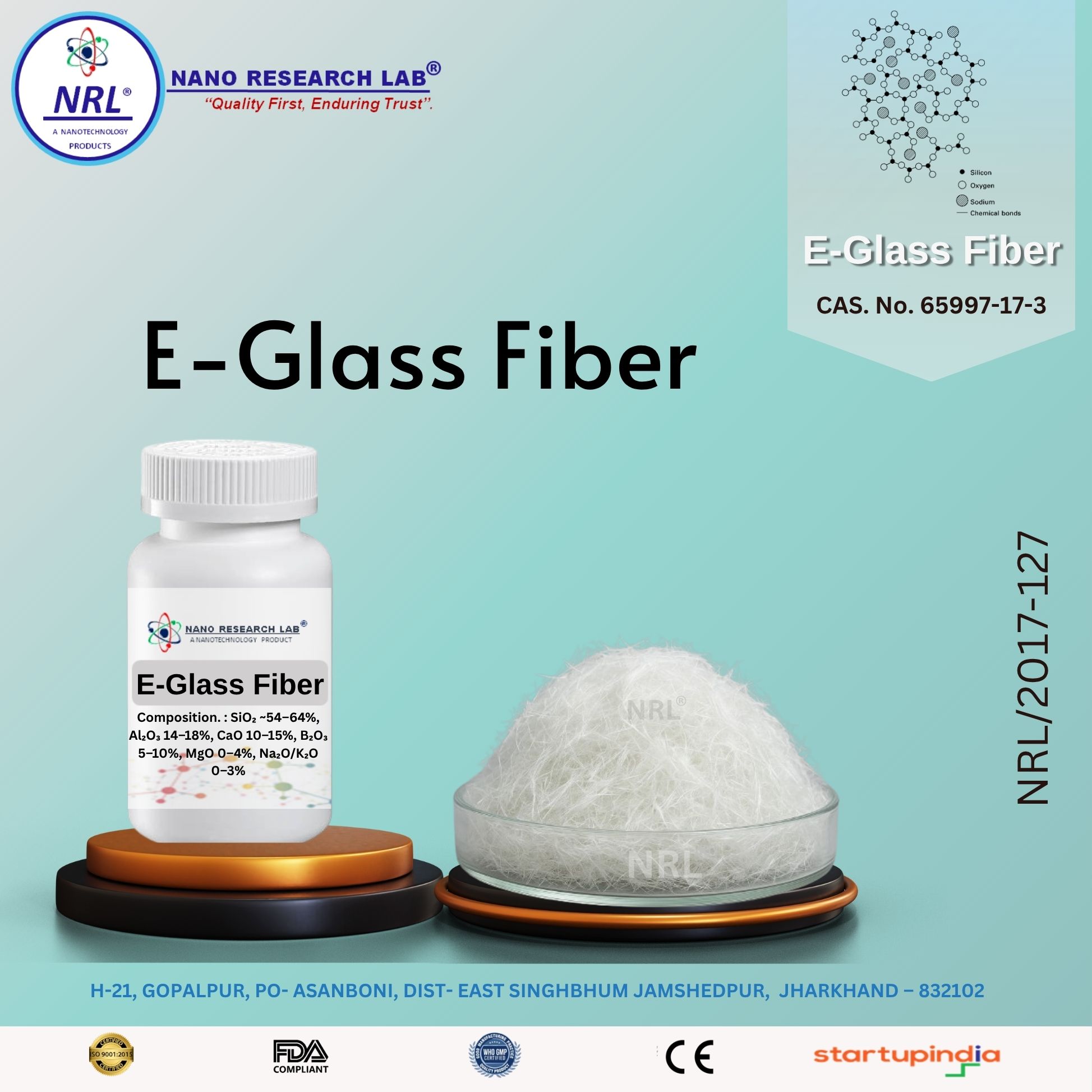
E-Glass Fiber
₹1475.00
🧪 E-Glass Fiber (Electrical-Grade Glass Fiber)
⚙️ Technical Specifications
Property | Specification |
|---|---|
Type | E-Glass Fiber (Electrical-grade, also known as “electrical grade glass fiber”) |
Composition | SiO₂ ~54–64%, Al₂O₃ 14–18%, CaO 10–15%, B₂O₃ 5–10%, MgO 0–4%, Na₂O/K₂O 0–3% |
Form | Continuous filaments, chopped strands, or mats |
Filament Diameter | 5–25 μm (typical) |
Tensile Strength | 2.4–3.5 GPa |
Elastic Modulus | 70–90 GPa |
Density | ~2.5 g/cm³ |
Melting Point | ~1150–1200 °C |
Surface Treatment | Silane-based sizing for improved adhesion with resins |
CAS Number | 65997-17-3 |
🌟 Key Features
Excellent mechanical strength and stiffness
High dielectric strength and electrical insulation properties
Resistant to corrosion, chemicals, and high temperatures
Lightweight and versatile for composite reinforcement
Compatible with epoxy, polyester, vinyl ester, and thermoplastic resins
🔬 Applications
1. Composites
Used as reinforcement in fiberglass-reinforced plastics (FRP), panels, and laminates
Improves mechanical strength, dimensional stability, and impact resistance
2. Electrical & Electronics
Ideal for PCB substrates, insulating materials, and transformer cores
Provides high dielectric strength and electrical insulation
3. Aerospace & Automotive
Applied in lightweight structural components, panels, and body parts
Enhances mechanical performance while reducing weight
4. Construction
Used in cement and polymer composites, insulation panels, and structural reinforcements
5. Marine & Sports Equipment
Incorporated into boats, surfboards, sporting goods, and protective gear
Improves durability and strength under harsh conditions
⚠️ Handling & Storage
Store in a dry, clean area to prevent moisture absorption
Handle with gloves, masks, and protective eyewear to avoid irritation
Avoid inhalation of loose fibers or dust
